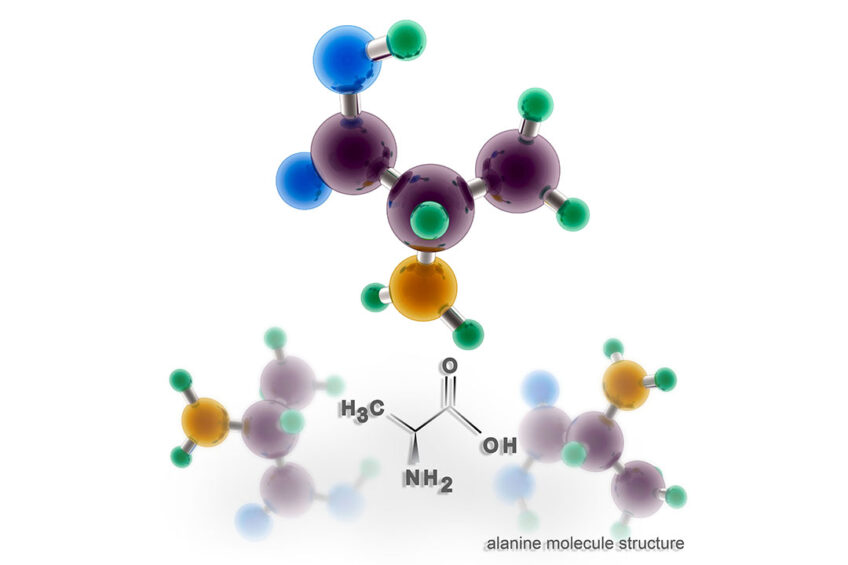Nutritional animal feed protein through artificial photosynthesis

Meeting the conflicting demands of a constantly growing population and protecting the environment could be helped by the synthetic production of a key nutritional protein.
Researchers have successfully developed a method for the synthetic manufacture of the nutritional protein using a type of artificial photosynthesis. The animal feed industry is the primary driver of high demand for large volumes of nutritional protein, which is also suitable for use in meat substitute products.
L-alanine production from CO2
Until now, protein for animal feed has been typically produced in the southern hemisphere with large-scale agricultural space requirements and negative consequences for biodiversity.
But a group led by Professor Volker Sieber at the Technology University of Munich’s Campus Straubing for Biotechnology and Sustainability has succeeded in producing the amino acid L-alanine, an essential building block in protein, from the environmental harmful greenhouse gas CO2 (carbon dioxide). Their indirect biotechnological process involves methanol as an intermediate.
How?
The CO2, which is removed from the atmosphere, is first turned into methanol using green electricity and hydrogen. The new method converts the intermediate into L-alanine in a multi-stage process using synthetic enzymes.
High yields
The researchers reported the method was extremely effective and generates very high yields. L-alanine is one of the most important components of protein, which is essential to animal and human nutrition.
Compared to growing plants, this method requires far less space to create the same amount of L-alanine, when the energy used comes from solar or wind power sources. The more efficient use of space means a kind of artificial photosynthesis can be used to produce the same amount of foodstuffs on significantly fewer acres. This paves the way for a smaller ecological footprint in agriculture.
– Professor Volker Sieber
First step on the road to produce other amino acids
The manufacture of L-alanine is the first step for the scientists: “We also want to produce other amino acids from CO2 using renewable energy and to further increase efficiency in the realisation process,” said co-author Vivian Willers, who developed the process as a doctoral candidate at the Technology University of Munich.
The researchers add that that the project is a good example of how bioeconomy and hydrogen economy in combination can make it possible to achieve more sustainability.
The research: “Cell-free enzymatic L-alanine synthesis from green methanol,” has been published in the journal Chem Catalysts from Cell Press.- Cell-free enzymatic L-alanine synthesis from green methanol – ScienceDirect











